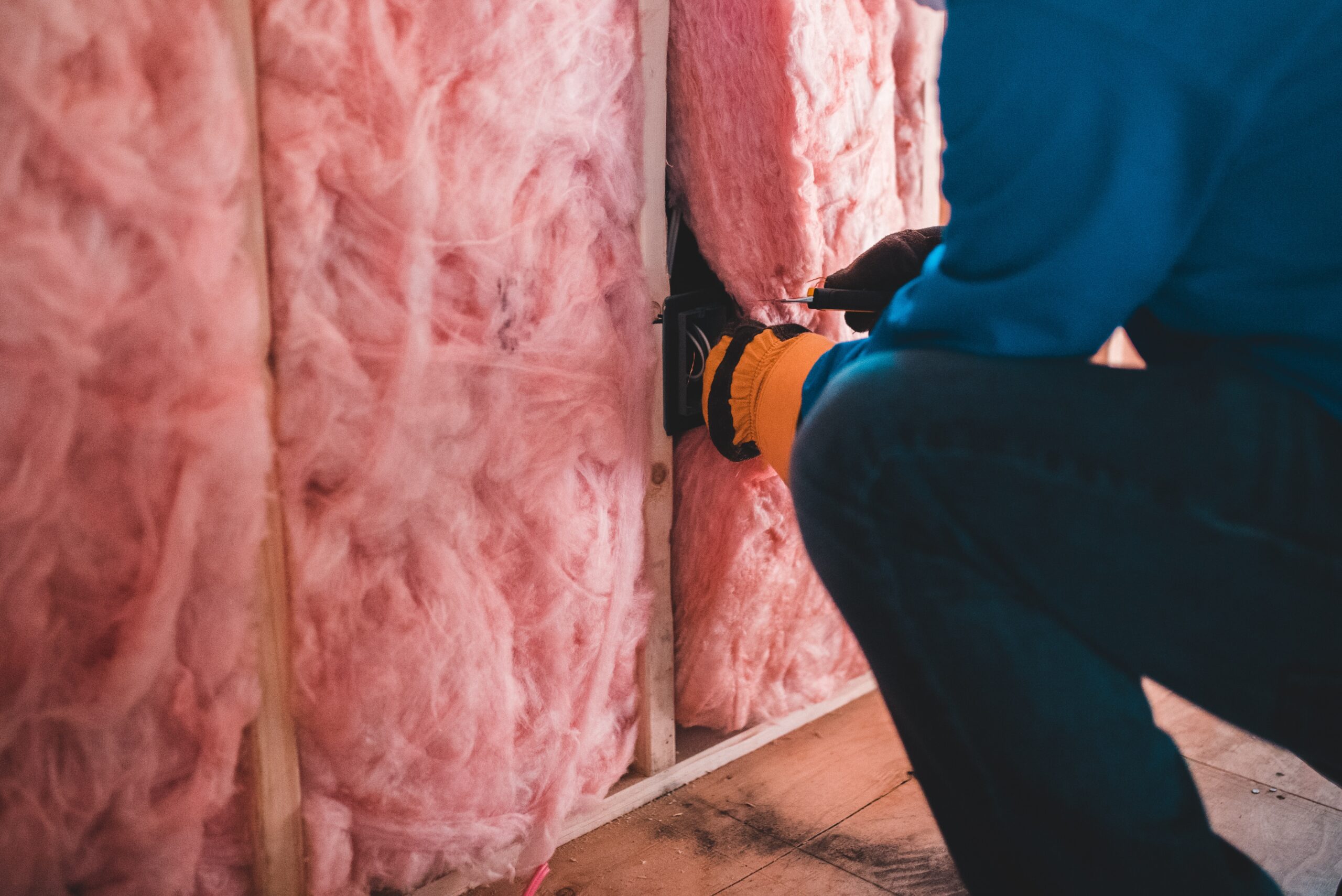As winter’s chill sets in, the focus shifts to keeping our homes warm and cosy. However, with rising energy costs, efficient heating is more than a comfort—it’s a necessity. The key lies in effective thermal insulation, a critical aspect often overlooked. In this article, we delve into the world of thermal insulation materials, guiding you through choosing the right options to cut heating costs without sacrificing warmth.
1. Fibreglass Insulation: A Traditional Choice
Fibreglass insulation, a staple in many households, remains a popular choice due to its cost-effectiveness and practicality. This material is crafted from extremely fine glass fibres, offering a lightweight yet robust solution for thermal insulation.
- Composition and Manufacture: Fibreglass is made by weaving together strands of glass into a fabric-like material. This process creates tiny air pockets within the fibres, which are the key to its insulating properties.
- Installation and R-Value: Available in rolls or batts, it’s relatively simple to install, particularly in attics and wall cavities. The effectiveness of fibreglass insulation is measured in R-values – the higher the R-value, the better the insulation.
- Cost-Effectiveness: Its affordability makes it an attractive option for many homeowners, striking a balance between cost and performance.
- Safety Considerations: When installing fibreglass insulation, protective clothing, masks, and gloves are necessary as the fibres can irritate the skin and lungs.
2. Stone Wool Insulation: Fire Resistance and Sound Absorption
Stone wool insulation, derived from basalt rock and recycled slag, is lauded for its fire-resistant properties and sound absorption capabilities.
- Composition and Benefits: Stone wool is produced by heating the rock and slag to very high temperatures and then spinning it into fine fibres. This process results in a material that is both dense and porous.
- Fire Resistance: One of the standouts features of stone wool is its ability to withstand high temperatures, making it a safe choice for insulation.
- Sound Absorption: The dense nature of this material also makes it an excellent sound absorber, significantly reducing noise pollution.
- Energy Efficiency: Despite its higher cost compared to fibreglass, the increased R-value per inch and longevity can lead to long-term savings.
3. Polyurethane Foam: Versatility in Application
Polyurethane foam, known for its versatility, comes in two forms: spray foam and rigid foam panels. It’s a powerful insulator, offering high R-values and an airtight seal.
- Composition and Forms: The foam is created by mixing two compounds that expand and harden, forming a lightweight, sturdy insulating layer.
- Spray Foam: Ideal for irregular spaces and hard-to-reach areas, spray foam expands to fill gaps, providing an excellent airtight seal. Its ability to conform to any space makes it superior in preventing air leaks.
- Rigid Foam Panels: These panels are perfect for insulating floors, walls, and suspended ceiling. They are easy to cut and fit into specific areas, offering flexibility in installation.
- Long-Term Savings: While the initial investment is higher, the energy savings over time can be substantial, especially in climates with extreme temperatures.
4. Natural Insulation Materials: Eco-Friendly Options
Natural insulation materials, such as sheep’s wool, cotton, and cellulose, are gaining popularity for their environmental friendliness and health benefits. These materials not only provide effective insulation but also offer a sustainable alternative to synthetic options.
Sheep’s Wool Insulation: This natural fibre is excellent for insulation, thanks to its ability to regulate moisture and resist mould. Wool’s natural crimp creates tiny air pockets, enhancing its insulating properties.
-
- Sustainable and Renewable: Wool is a renewable resource, making it an eco-friendly choice.
- Moisture Regulation: Unlike synthetic materials, wool can absorb and release moisture without compromising its insulating abilities.
- Natural Fire Retardant: Wool is naturally fire-resistant, adding an extra layer of safety.
Cotton Insulation (Denim): Recycled denim is another eco-friendly insulation material, offering good thermal and acoustic insulation.
-
- Recycled and Safe: Made from post-consumer recycled denim, this material is safe to handle, free from irritants found in fibreglass.
- Energy Efficiency: Provides comparable R-values to traditional insulation materials.
- Environmental Impact: Reduces landfill waste by repurposing denim and requires less energy to produce than fibreglass.
Cellulose Insulation: Composed of recycled paper, primarily newspapers, cellulose insulation is an environmentally responsible choice.
-
- Energy Efficient and Economical: Offers excellent thermal insulation at a competitive price.
- Low Embodied Energy: The production process requires significantly less energy compared to synthetic insulators.
- Fire and Pest Resistance: Treated with non-toxic borate compounds for fire and pest resistance.
Cost Reduction Benefits: How Insulation Lowers Heating Bills in the UK
A crucial aspect of choosing the right insulation material is understanding the potential for cost savings, especially in the context of the UK’s climate and energy prices. Investing in proper insulation can lead to significant reductions in heating bills, making it an economical choice in the long run.
Analysing the Savings
- Impact on Energy Bills: Proper insulation can reduce the need for heating in winter and cooling in summer. In the UK, where heating demands are high, effective insulation can save up to 15-30% on heating bills, depending on the existing insulation and the type of material used.
- Long-Term Savings: While the initial investment may seem substantial, the reduction in energy bills means that most insulation types pay for themselves within a few years. For instance, installing loft insulation can pay back its cost in as little as two years.
- Regional Variations: Savings can also vary depending on the region in the UK. Homes in colder areas, like Scotland, may see higher savings compared to those in milder regions.
- Government Incentives and Schemes: In some cases, homeowners can benefit from government grants or schemes aimed at improving home energy efficiency, further reducing the overall cost.
Additional Benefits
- Increased Property Value: Homes with high energy efficiency ratings often have higher resale values.
- Environmental Impact: Reducing energy consumption also lowers carbon emissions, contributing to environmental sustainability.
A Warm Conclusion
In summary, choosing the right thermal insulation material can significantly reduce heating costs while keeping your home comfortably warm. From traditional fibreglass to eco-friendly options, each material offers unique benefits. Remember, the best choice depends on your specific needs, budget, and environmental conditions.
Author Bio:
Cinthia Rosa
As an Insulation Expert at Galaxy Insulation and Dry Lining, UK, Cinthia’s contribution to the company’s growth has been invaluable. She has amassed abundant knowledge and technical know-how regarding insulation products, which she consistently shares with the masses through engaging and informative blogs.
https://www.linkedin.com/company/galaxy-insulation-and-dry-lining-ltd/

